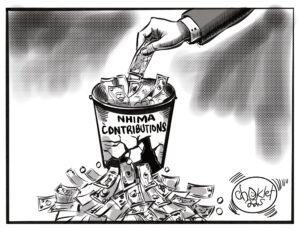MOBILE money transactions in Zambia increased to K105.6 billion by the end of last year from K49.6 billion in 2019, representing a 113 per cent increment, according to ZICTA.
And the Authority has revealed that MTN Zambia Limited and Airtel Zambia Limited continued to dominate the ICT market with 45.3 per cent and 35.5 per cent of the market, respectively, compared to Zamtel’s 19.2 per cent.
According to the Zambia Information and Technology Authority (ZICTA) ICT Sector Annual Market Report, mobile money transactions in the country leaped to an historic high of over K105 billion in 2020 compared to just K49.6 billion in 2019, representing a 113 per cent hike.
Data from the report revealed that increase was mainly attributed to the strong emphasis by the Bank of Zambia (BoZ) and public health institutions to avoid or limit physical contact and exchange of cash in the wake of the Coronavirus pandemic, among others.
“The usage of electronic money services in Zambia increased significantly between 2019 and 2020 on account of strong emphasis by the central bank and public health institutions to avoid or limit physical contact and exchange of cash in the wake of the coronavirus COVID-19 pandemic. The surge was also driven by continued reliance on electronic and mobile platforms to send and receive funds as well as payment of utility services such as electricity and water as well as subscription for pay TV channels. Specifically, the value of mobile money transactions more than doubled from K49.6 billion recorded at the end of 2019 to K105.6 billion at the end of 2020, reflecting an increase of 113.07 per cent. Similarly, the volume of mobile money transactions increased from 553 million transactions at the end of 2019 to 747 million transactions at the end of 2020, reflecting an improvement of 35.03 per cent,” the report revealed.
The report added that Zambia equally made significant strides on its digital transformation path.
“According to the 2020 World Bank Diagnostic Report on Digital Transformation in Zambia, the country made significant strides on its path to digital transformation over the last few years. The report assessed Zambia’s strengths and weaknesses with respect to five pillars that together form the foundation upon which the benefits of digital transformation can be realised. The pillars considered included digital infrastructure, digital skills, digit entrepreneurship, digital platforms and digital financial services. The report showed that progress was particularly evident in digital infrastructure, digital financial services and digital platforms while more significant gaps remained in digital skills and digital entrepreneurship. The report also acknowledged that technology could play an important role as Zambia advanced its vision for economic transformation and could have a transformative effect on the government,” the report read.
It noted that the reduction of the Monetary Policy Rate (MPR) last year increased investment into the ICT sector.
“The reduction in the Monetary Policy Rate increased liquidity in the market by reducing the cost of borrowing, which was reflected in the decline in the average lending rates. The decline in the average lending rates entailed a lower cost of borrowing and presented more opportunities for increased investment in the ICT sector and the growth of other sectors, which consequently increased the demand for ICT services,” it read.
The report also disclosed that the total number of active mobile phone subscriptions increased from 17.2 million in 2019 to 19.1 million currently.
“The total number of active mobile telephone subscriptions increased from 17.2 million reported at the end of 2019 to 19.1 million subscriptions recorded at the end of 2020, reflecting an improvement of 10.9 per cent. This performance represents a growth in the mobile penetration rate, defined as the ratio of the total number of active subscriptions to the total population, from 99.1 per cent recorded at the end of 2019 to 106.8 per cent in 2020. The increase in the number of active mobile telephone sim cards was mainly attributed to increased investments in telecommunication coverage infrastructure, the increase adoption of Machine to Machine (M2M) services such as point of sale machines and other data-enabled devices that utilise sim cards as well as increased demand for mobile voice and Internet services as households, firms and individuals adopted various coping strategies to sustain their operations during the peak of the COVID-19 pandemic. The Authority forecasts that the number of active subscriptions will increase by 5.2 per cent in 2021, 2.6 per cent in 2022 and 1.3 per cent in 2023. This growth outturn translates into a projection of 20.1 million active subscriptions in 2021, 20.6 million in 2022 and 20.9 million in 2023,” it read.
And the report revealed that Zamtel continued to lag behind in third position with 19.2 per cent of the market share compared to its competitors MTN Zambia and Airtel who secured 45.3 per cent and 35.5 per cent, respectively.
“MTN Zambia Limited and Airtel Zambia Limited continued to have relative dominance in market share over Zamtel, with a 45.3 per cent and 35.5 per cent share of the market, respectively. Zamtel maintained the least market share in mobile telephone subscriptions with 19.2 per cent stake of the total number of subscriptions. The market shares of Airtel Zambia and MTN Zambia increased by 1.5 percentage points and 1.6 percentage points, respectively, while Zamtel lost market share of 3.2 percentage points in 2020. Competition in the market was mainly driven by bundled offers by operators that provided discounted minutes and data plans. In addition, efforts to increase coverage through new investments as well as improvements in quality of service through the deployment of superior technologies such as 4G/LTE had a major influence on customer acquisition and retention outcomes. The market continued to record some marginal improvements in competition among the three mobile network operators measured through concentration indices,” read the report.
























